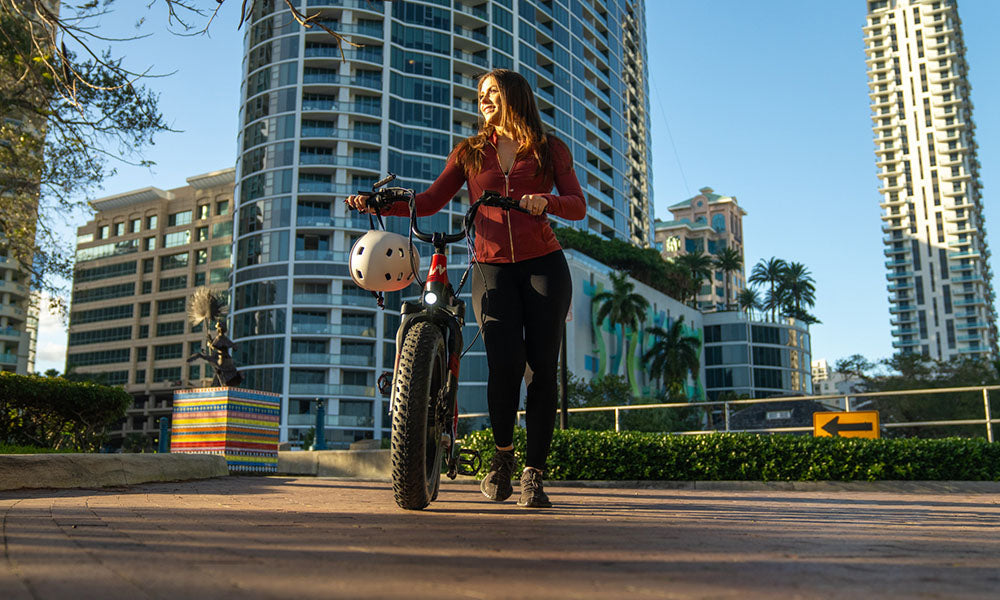
Ebike Classes: A Comprehensive Guide
Electric bikes classes
Ebikes stand as a growing rapidly technology, yet the legal framework surrounding their usage remains in its early stages. Across the United States, various state laws struggle to keep pace with the public's comprehension of electric bikes, often conflating them with mopeds or electric motorcycles.
Are e bikes permitted on bike lanes? Are they allowed in parks? What is the maximum permissible speed? what are electric bikes classes ?
The absence of definitive answers from most states has created a mixture of regulations. The unclear legal status has slowed down the popularity of ebikes, leaving many potential riders unsure about the rules governing their operation.
The united states have embraced a standardized system categorize them into Class 1, Class 2, and Class 3 | Nevertheless, it's crucial to consult your local regulations for ebikes compliance if you have any doubts.
While the chances of being pulled over for riding at 22 miles per hour in a bike lane or utilizing an ebike in the incorrect lane are slim, particularly if it resembles a traditional bike, exercising caution is always advisable.
To fully comprehend the world of electric bikes, let's delve into the distinct classes and explore the broader spectrum of electric vehicles.
Class 1 ebike
Class 1 e-bikes, are constrained to a maximum speed of 20 miles per hour, and their electric motor exclusively engages when the rider is actively pedaling.
These bikes are governed by a set of regulations that define their capabilities and where they can be used.
With a capped top speed of 20 miles per hour, Class 1 ebikes prioritize safety and compliance.
Unlike some electric bikes equipped with a throttle, Class 1 ebikes take a different approach. While they may feature a throttle on the handlebars for an extra power boost, the throttle only engages when you're pedaling. Interestingly, the level of pedaling effort required isn't demanding.
You can effortlessly throw the bike into a low gear and leisurely spin the pedals forward, allowing the throttle to work its magic.
One distinguishing factor of Class 1 ebikes is their compatibility with bike paths and lanes shared with traditional, non-assisted bikes .
Class 2 ebike
Class 2 electric bikes carve a unique niche in the world of e-mobility, maintaining a top speed restriction of 20 miles per hour. What sets them apart, however, is the inclusion of a throttle that operates independently of pedaling. This means that even when your feet are at rest, you can activate the electric motor with a simple twist of the throttle.
While Class 2 ebikes embrace the convenience of throttles, they remain versatile by also supporting electrically assisted pedaling. This dual functionality provides riders with the flexibility to choose between a purely throttle-driven experience and a collaborative effort where the motor complements their pedaling efforts. This adaptability makes Class 2 ebikes a suitable option for riders who appreciate the ease of throttle control but also enjoy the option to engage in traditional pedaling when desired.
Similar to their Class 1 counterparts, Class 2 ebikes are generally permitted in areas designated for analog bikes. This means you can confidently ride them on bike paths and in bike lanes shared with traditional bicycles. This seamless integration into existing biking infrastructure makes Class 2 ebikes an accessible and user-friendly choice for riders who value the convenience of throttle control without sacrificing the option to pedal-assist when the mood strikes.
In essence, Class 2 ebikes offer a dynamic blend of throttle-powered cruising and electrically assisted pedaling, presenting riders with a versatile and enjoyable riding experience while maintaining compatibility with traditional biking spaces.
Class 3 ebike
Class 3 electric bikes can go as fast as 28 miles per hour and are required to have a speedometer, but whether they have a throttle or not depends on the state's rules. In California, for instance, Class 3 e-bikes can't have throttles at all.
In some states, throttles are okay, but they should only work up to 20 miles per hour, while pedal-assisted power can go up to 28 miles per hour.
Most states let you ride Class 3 e-bikes on regular roads or in bike-only lanes on the side of the road. However, you can't take them on bike paths or trails shared with walkers in parks.
Some e-bikes try to get around these rules by adding a mode that limits the speed to 20 miles per hour. You can switch this setting or use a special key to unlock the bike's full speed, but be careful where you ride it !
- Spreadsheet comparing state electric bicycle laws
| Class | Speed Limit | Throttle | Usage |
|---|---|---|---|
| Class 1 | 20 mph | Pedal-assist only | Allowed on bike paths and lanes shared with traditional, non-assisted bikes |
| Class 2 | 20 mph | Throttle or pedal-assist | Allowed on bike paths and in bike lanes shared with traditional bicycles |
| Class 3 | 28 mph | Throttle or pedal-assist (depending on state regulations) | Allowed on regular roads or in bike-only lanes on the side of the road |
